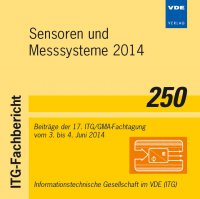Contributions to Integrated Adaptive Spike Coded Sensor Signal Conditioning and Digital Conversion in Neural Architecture
Conference: Sensoren und Messsysteme 2014 - Beiträge der 17. ITG/GMA-Fachtagung
06/03/2014 - 06/04/2014 at Nürnberg, Deutschland
Proceedings: Sensoren und Messsysteme 2014
Pages: 6Language: englishTyp: PDF
Personal VDE Members are entitled to a 10% discount on this title
Authors:
Kammara, Abhaya Chandra; Koenig, Andreas (TU Kaiserslautern, Kaiserslautern, Germany)
Abstract:
With the rapid advance of modern micro- and nanoelectronics, devices become more vulnerable to failure as well as to noise. The need for fault tolerant devices and circuits, that can compensate degradation and failure by adaptation, are inherently immune to noise, and compute at low-power gives new incentive to the motivation and goals of neuromorphic computing again. In particular, the realization of sensor signal conditioning and conversion by neural circuits coexisting with potentially large digital circuits on the same substrate is an attractive field for these techniques. In our work, for the case of a selected magnetic sensor (AMR), a spike-coded conceptual circuit employing coincidence detection and principles from the auditory system is developed, that already meets several of the goals mentioned above. The basic functionality of a 4 bit spiking neural ADC with a sampling rate of 1MHz could be shown with simple coincidence detection.An extended version with place coding using only 50% of the delay lines to obtain the same results with the same sampling rate is also shown. Extension to higher resolution by extended tap delay lines and place coding application, increased tolerance endurance due to collective adaptation as well as silicon realization will be investigated.


